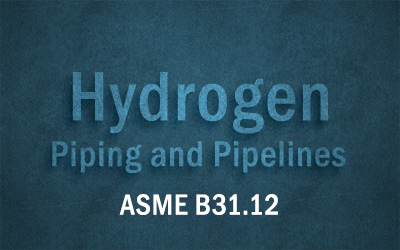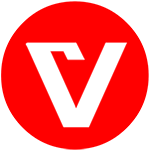Pipe Stress analysis and supporting systems for piping designers
What you'll learn
Eliminate Design Iterations: Proactively design layouts that meet mechanical requirements, directly reducing costly communication loops and eliminating re-work cycles between the Piping Design and Stress Analysis teams.
Translate Code to CAD: Gain the essential knowledge of stress analysis criteria (e.g., thermal flexibility, support span limits) and learn to implement these ASME B31 code rules directly within your 3D modeling environment.
Master Load Vector Generation: Understand precisely how your layout decisions (routing, branch connections, component weight) directly translate into critical load vectors that determine the compliance of the entire system.
Optimize Support System Placement: Select and place piping support systems not just for weight, but to effectively control displacement and manage moment loads, making the system inherently mechanically sound from the initial draft.
Accelerate Deliverable Approval: Structure and prepare piping deliverables (Isometrics, Plan Views) to proactively address the stress engineer's needs, leading to faster review cycles and accelerated project turnover.
Validate Constructability & Compliance: Achieve true engineering synergy by ensuring your designs are simultaneously constructable, cost-efficient, and fully compliant with ASME flexibility and sustained stress limits.
ASME B31.12 Hydrogen Piping and Pipelines
What you'll learn
Hydrogen Technologies and Market Players
Global Policies
Describe the scope of B31.12
Explain the design requirements of B31.12
Identify materials requirements
Explain B31.12 requirements for fabrication, assembly, and erection
Explain the B31.12 requirements for inspection, examination, and testing
Bolted Joints and Gasket Behavior
What you'll learn
Explain how the bolted joint functions as a mechanical system that relies on the simultaneous interaction of the three primary components to successfully seal the connection
Assess the mechanical stress and strain of a bolt and explain the challenges that one encounters when specifying an optimum bolt load
Evaluate the total state of stress in bolts and how this effects the selection of a given bolt type and grade
Describe the effects of in-service conditions and how they reduce or increase bolt load
Describe the concept of leak tightness as a predictable value of gasket stress and how to use leak tightness as the basis of specifying bolt loads
Identify conditions that create bolt failure
Use ASME PCC-1 Guidelines for compliance to successful sealing of bolted, gasketed connections
Discern how to use either stress or strain to select bolt load
Evaluate the various methods of attaining bolt load.
Pipe Stress Engineering-Academic foundation
What you'll learn
Differentiate between properties of various engineering materials.
Apply fundamental principles of stress, strain, and material failure theories.
Perform stress analysis on different structural components.
Utilize Finite Element Analysis (FEA) software for complex problems.
Analyze thermal, static, and dynamic loads.
Develop a strong theoretical foundation for specialized fields like pipe stress analysis.
Pipe Stress Engineering, Static
What you'll learn
Execute the accurate geometric and topological discretization of the pressure envelope and ancillary components within the CAESAR II
Define and integrate the set of time-invariant static load vectors
Conduct a rigorous tensor evaluation of primary and secondary stresses
Nozzle and Support Reaction Profiling
Resolve the effects of non-linear boundary conditions
Validate the mechanical integrity compliance margin
Drafting hardware technical specification
Moving among Compliance, Value and Energy
Master the final phase of analysis, producing irrefutable, audit-proof documentation.
As-built Engineering in Assets Management
What you'll learn
Understand the critical importance of as-built data in revamp projects.
Plan and execute a site survey for collecting as-built data.
Utilize new technologies and tools like laser scanning, drones, and reality capture.
Translate raw field data into accurate engineering drawings and models.
Present as-built information for new construction.
Update existing plant drawings and documents to reflect as-built conditions.
Process Plant Layout and Piping Design, Level – I
What you'll learn
Interpret Engineering Documents: Effectively read and utilize core piping design documents, including PFDs, P&IDs, and Isometric drawings.
Identify Components: Differentiate and select standard piping components (valves, fittings, flanges) and understand their functions within the system.
Apply Layout Principles: Execute preliminary Plot Plan and Equipment Layout based on functional and safety criteria.
Establish Design Constraints: Identify and apply the primary constraints that dictate pipe routing (e.g., access, maintenance, thermal expansion).
Determine Clearances: Apply industry standards to determine minimum clearances, spacing, and accessibility requirements for various equipment types.
Communicate Design Intent: Structure and present design information clearly for effective communication with structural, mechanical, and stress engineering teams.
Process Plant Layout and Piping Design, Level-II
What you'll learn
Design Major Plant Areas: Develop comprehensive layouts for common plant areas (e.g., pump stations, compression stations, cooling towers) adhering to API and OSHA standards.
Optimize Pipe Rack Geometry: Calculate and optimize pipe rack width, height, and bay spacing while managing utility segregation and thermal expansion requirements.
Resolve Layout Conflicts: Proactively identify and resolve complex clashes and interferences using 3D model review techniques (e.g., navigating virtual HAZOP and 3D Model Review sessions).
Apply Design for Maintenance (DFM): Ensure adequate maintenance envelopes and removal paths for critical equipment (e.g., heat exchangers, valves, pump spares) to minimize future downtime.
Specify Specialty Items: Prepare accurate data sheets for critical piping specialty items (e.g., strainers, spectacle blinds, flame arrestors) and integrate them correctly into the layout.
Generate Core Deliverables: Produce precise Plot Plans, Equipment Arrangements, and Piping Key Plans suitable for structural and civil engineering use.









